Should You Expand Your Shop with Next-Gen 3D Metal Printing?
So, you may have started to envision a 3D printer joining the other machines on your shop floor in the not-too-distant future. You know machining centers and lathes inside and out, but how do you even begin selecting AM equipment? What attributes does one look for in a printer, and how do you assure your customers that they will receive metal parts with the same metallurgical integrity as those made from billet or bar stock?
Machinists were making turbine blades, orthopedic implants, and other complex parts long before commercial 3D printers entered the market. They were producing prototypes quite quickly when the term rapid prototyping was yet to be coined.
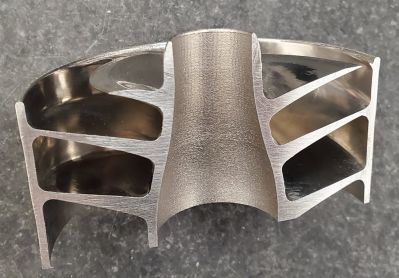
Cross-section of a mission-critical CO2 pump inducer for an aerospace application, produced by next-generation 3D metal printing.
These machining capabilities have improved over the years with the addition of CAM software, and when you ponder the remarkable metal cutting potential of today's CNC tools it raises a question: What does metal additive manufacturing (AM) mean to machine shops, most of which have been producing precision surfaces and nuanced geometries for demanding markets without reliance on laser beams and metal powder?
Breaking the Paradigm
AM allows you to solve previously intractable design problems and opens doors to work that would otherwise remain out of reach. Parts can be manufactured as needed, where needed, streamlining the supply chain and reducing lead times. 3D printers create lighter, consolidated parts that support higher-performance assemblies with far fewer components. 3D printers create lighter, consolidated parts that support higher-performance assemblies with far fewer components -- without having to rely on casting.
AM also helps overcome a major headache for machinists in a variety of industries from aerospace to industrial turbomachinery: access limitations. Consider a part with internal flow paths -- such as a compressor manifold or a shrouded impeller. Say you're looking for a half-inch-diameter gun-drilled hole that's 30 inches long and has to maintain a certain dimensional tolerance in terms of how straight it is and where it is in relation to the other surfaces in a part.
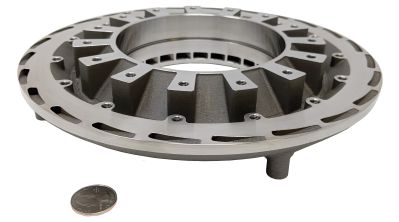
A 3D-printed microturbine for power generation with complex internal labyrinth structures that channel exhaust gases far more efficiently than conventional systems.
That can be very challenging to machine: reaching deep inside any workpiece with a cutting tool can lead to deflection, chatter, and tool breakage. At some point such operations become impractical, in which case the design must be broken up into smaller pieces and then assembled, welded or brazed together post-machining. In addition to any joining technique there is typically an accompanied inspection required by level 2/3 inspectors.
Metal AM Eliminates All This Effort
The newest generation of 3D metal printers can almost completely negate any geometry constraint imposed by cutting tools. Need to machine shaped holes for cooling? How about one that also spirals along its entire length? Depending on the part size, sinker EDM (or laser drill) will produce that shaped hole -- as least to some depth -- but not the spiral requirement. No other manufacturing process aside from advanced AM can generate part features like this and do so without increasing cost or cycle time.
Building Value for Both Customers and Machine Shops
Many 3D-printed parts can be completed in one or sometimes two operations, versus six or eight for a machined part that requires jigs, fixtures, part programs to drive the cutting tools, setup, testing and wait times between processes. We've seen lead times reduced from 18 weeks to deliver a casting to as few as two or three with next-gen AM equipment on a shop floor. Part costs may be about the same, but the real value, when a piece of your customer's essential equipment has broken out in the field and needs replacing as quickly as possible, is considerably more.
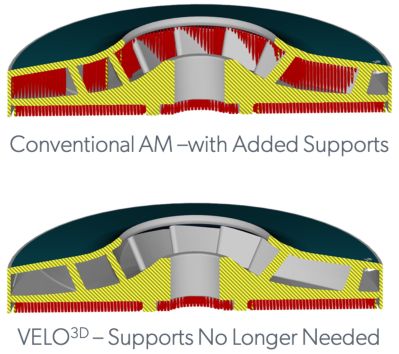
Before (above) and after (below) images of a shrouded impeller illustrate how next-generation AM with a VELO3D Sapphire machine dramatically reduces the need for supports (in red) during the 3D-printing process.
Functional simplicity is another aspect of AM equipment; there are no mandatory cutting tools, no offsets to make, tool wear to monitor, or mid-cycle stops to pull off a wad of chips. With the more advanced metal AM equipment, it's possible to load the program, fill the powder reservoir, start the build, and come back the next day to production parts. These next-gen machines have self-monitoring, calibration and metrology built right in; there's no need for a field service engineer to babysit today's 3D printers.
So, where does that leave machine shops? Will they one day be replaced by 3D printing service bureaus? Hardly. Machining and 3D printing have a synergistic relationship. Metal AM parts, by-and-large, almost always need some post-print machining; CNC machine tools are still required for secondary operations like removing an additive workpiece from the build plate and finishing machine-critical surfaces. But time is definitely saved here as well, since these steps are relatively minor compared to machining a part from billet or bar stock.
The Changing Outlook
An increasing number of shops both large and small are realizing that metal AM can often be a better approach to manufacturing at least some of their parts or part features. In the past, metal 3D printing has been something that only specialized shops/service bureaus have used. But we're beginning to see shops that haven't previously focused on AM starting to feel more comfortable with the technology as they realize how it can help them stay on top of customer requests and respond to new business opportunities.
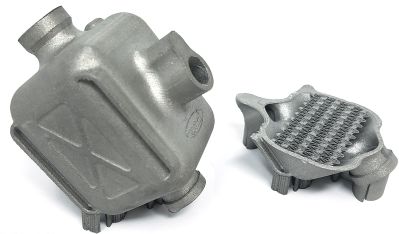
A heat exchanger test piece features complex inner channels and very thin walls that are only possible through AM.
Aerospace wants stronger, lighter structures with complex inner geometries not possible to produce any other way. Power generation and energy companies are looking for the most efficient, performance-driven pumps, heat exchangers and impellers possible. A wide variety of potential new customers for your shop are now looking more closely at what AM might do to improve their production timelines and product quality.
AM is the gateway to growth through innovation. It will enable you to provide a greater volume and variety of custom components -- which have been extremely challenging to manufacture in the past and are critical to the performance of systems your customers make -- more simply, cost-effectively and faster.
Next Steps
It's important to understand that not all printers are made equal. Accuracy, build speed, ease-of-use, system architecture, and quality assurance controls vary from one equipment maker to another, even more so than with CNC machine tools. You should also take a look at AM machine build-chamber size relative to the types of parts and components your customers may be interested in.
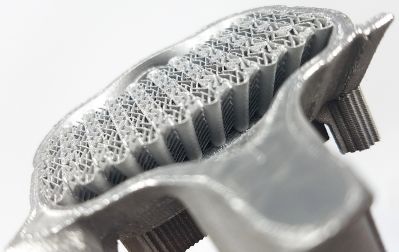
VELO3D has designed and printed dozens of parts previously considered impossible to make, unlocking new critical applications for their customers.
As a machining business, the situation you're in now isn't unlike that faced by shop owners in the early 70's, when screw machines and tracer mills slowly gave way CNC machine tools. Those who embraced the new technology grew and prospered. Those who didn't were eventually shuttered or sold off.
It's becoming pretty clear that now is the time for machine shops and discrete manufacturers to look at 3D printing as they would any other piece of machinery: just one more essential tool in their manufacturing toolbox. AM's ability to make practically any shape imaginable in foundry-grade alloys is a gamechanger -- for your ability to service your existing customers, and for expanding into new markets. The question is: will your shop stay in the high-end game…or fall behind?
Want more information? Click below.
Rate this article
View our terms of use and privacy policy